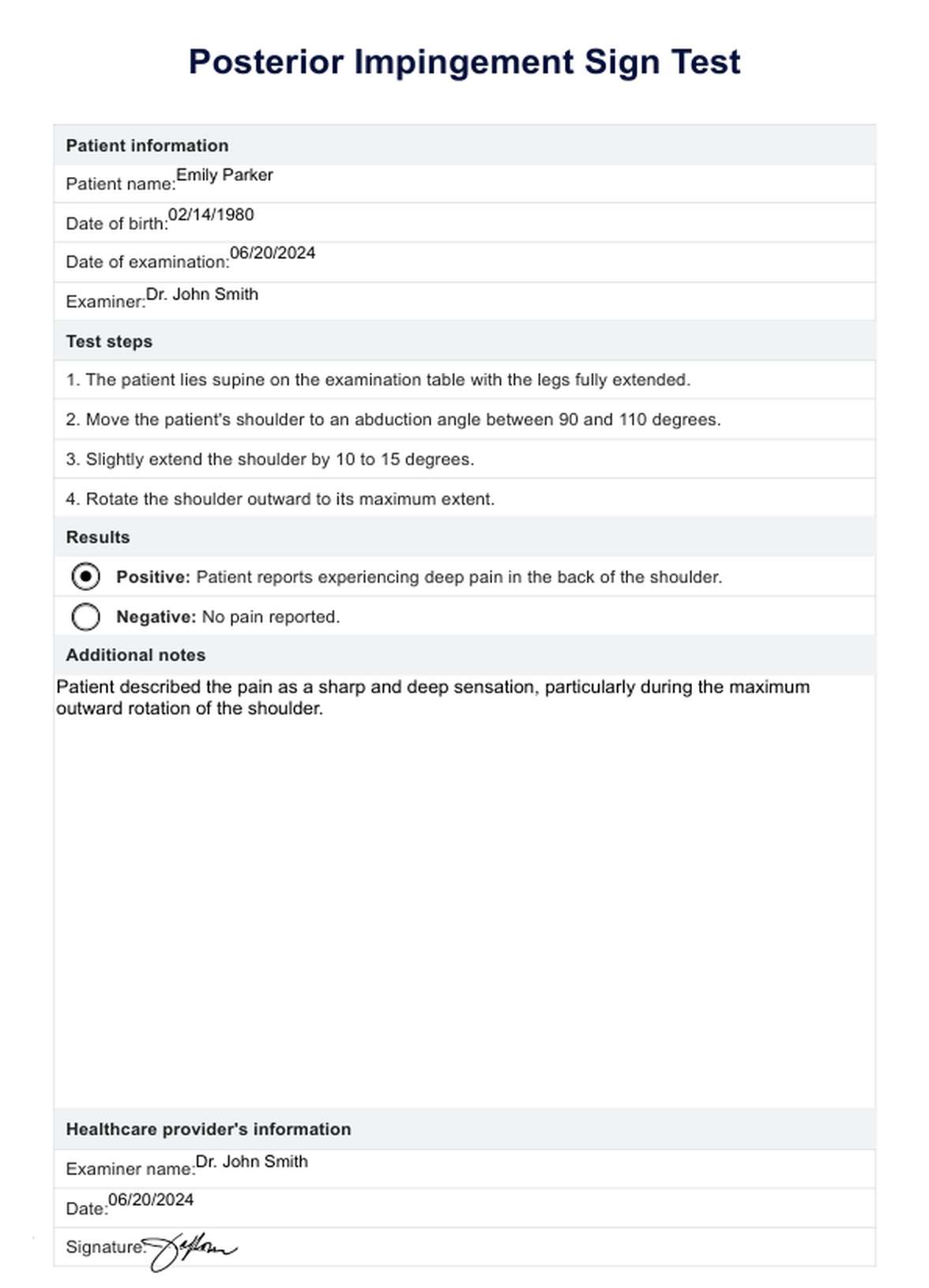The Posterior Impingement Sign Test is a diagnostic tool used by healthcare professionals to identify both internal and external rotation and posterior shoulder pain and impingement. It involves specific maneuvers to provoke symptoms and assess shoulder function.

Posterior Impingement Sign Test
Learn more about the Posterior Impingement Sign Test here. Use our template for accurate diagnosis and documentation of internal shoulder impingement.
Posterior Impingement Sign Test Template
Commonly asked questions
The test is performed with the patient lying down, shoulder, and elbow at 90 degrees. The examiner moves the arm into maximal external rotation, internal rotation, and abduction, checking for pain or discomfort that indicates impingement.
This test may be beneficial for patients who often experience shoulder pain or stiffness, especially those involved in activities requiring repetitive overhead movements, to diagnose potential internal shoulder impingement.
EHR and practice management software
Get started for free
*No credit card required
Free
$0/usd
Unlimited clients
Telehealth
1GB of storage
Client portal text
Automated billing and online payments











